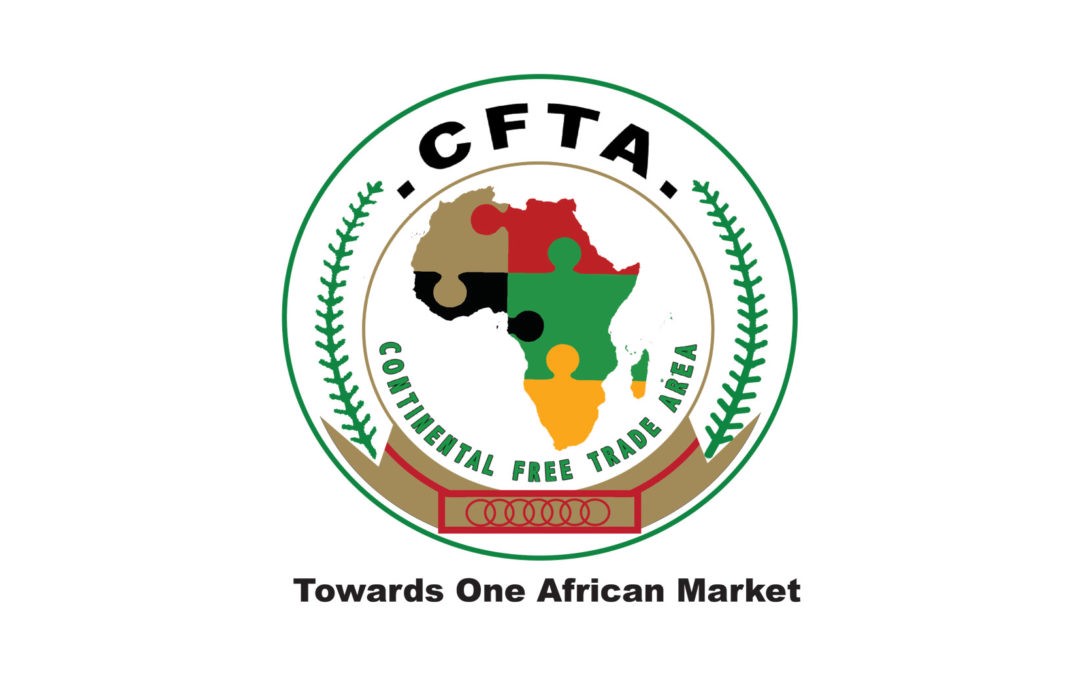Over the past months, the song of the African continental free trade agreement (AfCFTA) has been sung incessantly by economists, ministers and government officials. In July this year, Ghana won the bid to host the secretariat by edging out Egypt, Eswatini, Ethiopia, Kenya, Madagascar and Senegal.[i] Consequent upon Ghana being selected to host the AfCFTA secretariat, the president of the country intimated, “Indeed, the ‘Africa We Want’ is achievable.”[ii] Nonetheless, the government officials have been inefficient in educating its citizens on what exactly the AfCFTA is and what it means to Ghanaians.
The African continental free trade agreement (AfCFTA) is the agreement that established the African Free trade Area which aims at bringing African countries together to trade amongst each other to ultimately lead to regional and economic integration. Within a free trade area, the members commit to trade amongst each other with little or no barriers to limit each other. In the free trade area, the members negotiate to remove (totally) or reduce to its barest minimum tariffs (taxes imposed on imports) and other restrictive measures which limit trading. Thus, if Ghana in its trade with Nigeria and Togo had tariffs on its goods up to 75%, when it enters into a free trade agreement with them Ghana is expected to reduce that tariff of 75% drastically if not eliminate it completely. The idea of the illustration is what has been done under the AfCFTA where under it, all African countries (except for one) have agreed to come together to trade by removing or reducing drastically tariffs on goods as well as substantially remove all other restrictive measures which impede trade (often known as Non-Tariff Barriers).
The formal signing of the AfCFTA was done in Kigali, Rwanda on the 21st day of March 2018 by forty-four (44) heads of state of the AU. The journey to the formal signing of the agreement started in 2012 where at the AU summit, the heads of states adopted a decision to establish a continental free trade area by 2017 and further endorsed an action plan on boosting intra-African trade (BIAT). Subsequently in South Africa, in June 2015 at the 25th AU summit, the heads of states agreed to launch negotiations for the creation of the AfCFTA with a focus on the liberalization of trade in goods and services in Africa. It was after this launch that the 44 member states signed the agreement in Kigali. Per the terms of the agreement, the AfCFTA can only come into force when 22 countries ratify the agreement. Ghana and Kenya were the first countries to ratify the agreement and deposited the ratification instruments on 10th May 2018 following the 21 March 2018 signature of the Agreement in Kigali, Rwanda by 44 AU member states. In April this year, the Gambia became the 22nd member state to deposit its ratification instrument with the African Union thus bringing the agreement into force a month later. The Agreement entered into force officially on the 30th May 2019. As it stands currently, fifty-four member states have signed onto the agreement. Nigeria and Benin were the most recent countries to sign on to it on 7th July 2019. Also, 27 member states out of the 54 have ratified it currently. [iii] Eritrea is the only African country not a party to this agreement. In Niamey, Niger on the 7th July 2019 the operational phase of AfCFTA was launched at the African Union’s Extraordinary Summit. A transition period was declared to take place from the launch of the operational phase till 1 July 2020 when the real trading will begin under the agreement. With Ghana being selected to host the secretariat of the AfCFTA it has been given the arduous task of seeing to the implementation of the AfCFTA. The country has committed to donate $10 million for the operationalisation of the AfCFTA Secretariat.
As noted earlier and also embedded in the agreement of the African continental free trade, the AfCFTA aims at creating a single market for goods and services as well as a liberalized market for goods and services and to enhance the movement of capital and natural persons. It is also to aid in the movement being done without restrictions.[iv] It aims at re-directing the focus of trading onto Africa such that instead of Africans trading with western and “foreign” countries, African countries will make other African countries their principal trading partners. Under this free trade area then, Ghana should opt to trade with Nigeria, or Egypt or Gambia or Zimbabwe or Zambia or Malawi or Ethiopia or Botswana or Congo or Kenya or Ivory Coast or Rwanda or Senegal or Tunisia or South Africa (etc) as a first option as opposed to other non-African countries.
By the liberalisation of movement, it is expected that the impediments Africans face in travelling to other African countries will be no more. The struggle to obtain a visa or permits in other African country should be dealt with by the liberalisation of the movement of people. By the liberalisation of trade also, member states are to remove tariffs on 90% of goods to make goods accessible to all across the continent. The United Nations Economic Commission for Africa estimates that AfCFTA will boost intra-African trade by about 52% in 2022. Also, it is projected that industrialization will be increased so will be competitiveness and job creation. With Africa having a population of about 1.3 billion people and a $2.5 trillion economic bloc, the estimation is that by 2030 there will be about 6.7 trillion USD of cumulative consumer and business spending. [v]
As a laudable achievement, the AfCFTA is the largest free trade area to be created after the World Trade Organisation came into force in 1994. A free trade area of about 54 countries is a remarkable feat and if African countries and leaders are willing to put their shoulders to the wheel to make it work, then the Africa we want is achievable.
[i] https://africatimes.com/2019/07/08/ghana-selected-as-home-for-afcfta-secretariat-site/ (accessed 30 November 2019)
[ii] ibid
[iii] https://au.int/sites/default/files/treaties/36437-sl-AGREEMENT%20ESTABLISHING%20THE%20AFRICAN%20CONTINENTAL%20FREE%20TRADE%20AREA%20%281%29.pdf (accessed 30 November 2019)
[iv] Article 3 of Agreement Establishing The African Continental Free Trade Area.
[v] http://theconversation.com/why-africas-free-trade-area-offers-so-much-promise-93827 (accessed on 22 October, 2019).
Kweku Attakora Dwomoh



Leave a Reply